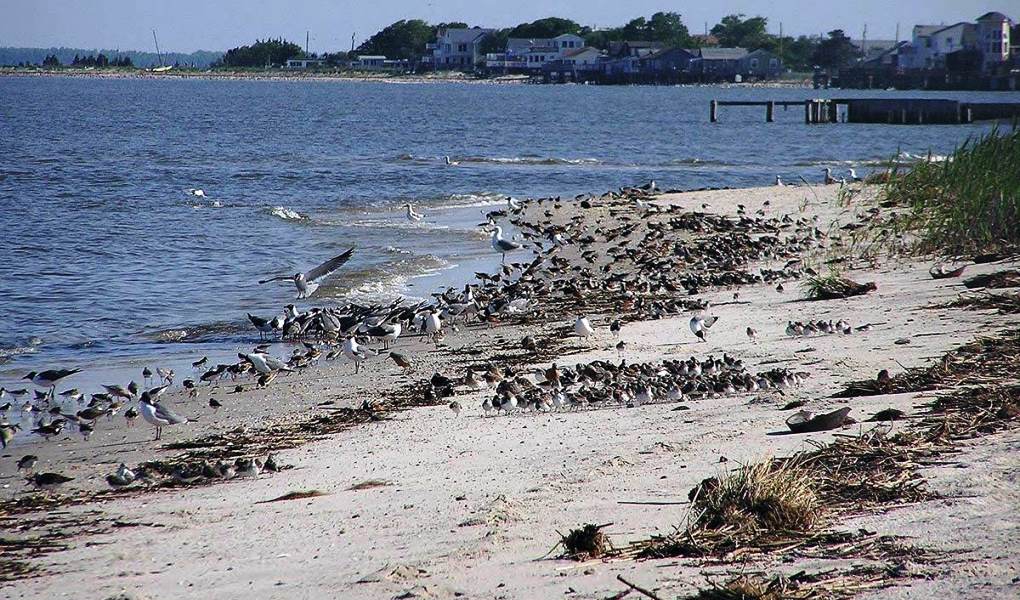Coastal salt marshes protect communities from flooding during storm surges and provide habitat for scores of resident and migrating birds, fish, and other wildlife species.
But there are only an estimated 17,000-sqaure miles of salt marsh remaining worldwide, much of it located on the Atlantic Coast.
Ducks Unlimited (DU) has taken a special interest in the restoration of these imperiled landscapes, working with partners like the U.S. Fish and Wildlife Service’s (USFWS) Coastal Program to rejuvenate coastal wetlands.
Thanks to a new grant from the National Fish and Wildlife Foundation (NFWF), and matching funds from multiple conservation partners totaling over $500,000, DU has targeted 15 sites in Delaware and New Jersey to rebuild the salt marsh bordering Delaware Bay.
Due to sea level rise, development, historical salt hay farming practices and mosquito ditching, Delaware Bay lost one acre of wetlands every day from 1996 to 2006, according to a study by the Partnership of the Delaware Estuary.
“If you could look at the marsh from above, you would see this massive amount of mosquito grid ditching, which has been impacting the flow of water on these marshes and causing some to sink,” said DU Regional Biologist Jim Feaga.
“That’s one of the reasons why we are losing so many acres of salt marsh. The water cannot recede fast enough and so it creates these large pools. A healthy salt marsh looks like a vegetated plain with varying elevations and series of small, interconnected puddles,” he added.
Historical changes, such as ditching, were initially made to dry out salt marshes, but have had the reverse effect, causing them to become too wet, stressing the plants and degrading habitat.
New Jersey, for example, has over 200,000 acres of salt marsh statewide, most of which has been negatively impacted by agriculture, ditching, infrastructure, and other changes.
As a result, tidal marsh birds like the saltmarsh sparrow are imperiled due to the loss of nestling habitat; American black ducks that rely on a thriving Delaware Bay salt marsh during their migrations have fewer places to refuge; and fish species that need to navigate the Delaware River watershed and coastal bays to survive can be restricted in their movements due to tidal flow.
However, a recent USFWS analysis revealed 70,000 acres of salt marsh in New Jersey, including the Delaware Bay area, show signs that suggest the marshes will benefit from early intervention of minor hydrologic changes to help increase their resiliency.
“With the loss and degradation of salt marsh habitat, restoring these marshes is critical to the ecological integrity of Delaware Bay,” said Eric Schrading, a field supervisor for the USFWS Delaware Bay Coastal Program.
“The Service is in full support of addressing the legacy effects of mosquito ditching and salt marsh agricultural practices using restoration techniques that have been proven to be successful in New England marshes,” he continued.
To repair Delaware Bay’s salt marsh, DU is using proven low-cost measures that include digging, often by hand, shallow channels called “runnels” that allow standing water to escape the marsh more rapidly.
Ditch remediation is also used to partially and strategically fill the mosquito ditches that disrupt water flow on the marsh.
If successful, the same tactics will be employed at other sites where salt marsh habitat is failing.
“These low-cost, low-tech measures are an inexpensive way to allow Delaware Bay to self-heal without overly disturbing habitat with large, earth-moving machines,” Feaga said.
“We intend for these projects to serve as proof that we can make a larger and more meaningful impact for coastal communities and the wildlife that depend on these habitats. The low-cost, low-tech approach will be another valuable tool to add to the greater salt marsh restoration effort,” he concluded.
The project planning of 1000 acres of salt marsh will take place over the next two years with implementation likely starting on the first sites in the next year.
Photo of seabirds on Delaware Bay shoreline via Ducks Unlimited.

